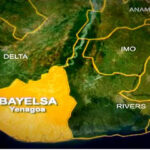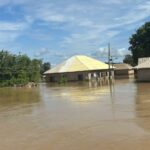In a huge flood, the Alau Dam, hitherto a source of sustenance for Maiduguri city, suddenly a few days ago, turned into a behemoth of turmoil, trauma and grief. It is comforting that the flood water is now receding, but leaving in its trail the anguish of destruction of infrastructure, lives and properties. The city was over 70 per cent underwater for many days and one can imagine the scale of ruination and its consequences. The dire needs of citizens caught in the vortex, for food, shelter, water and other basic sustenance are enormous. The government institutions on the ground were overwhelmed.
Happily, the whole nation rose to Maiduguri’s help. High government officials, including President Bola Ahmed Tinubu, have visited in droves to condole the citizens. Donations have poured in, to give solid assistance to the citizens. Individual donations include N1.5 billion from Aminu Dantata, his nephew Dangote N2 billion and our own Mohammed Indimi N1 billion, and another N0.5 billion from Seyi Tinubu, the list of high-end donations goes on and on, and it is rolling as I write today.
State governments across the nation have not been left out, graciously opening their treasuries to help out the needy Maiduguri citizens with hundreds of millions of naira.
Many other Nigerian citizens from all walks of life have been falling over themselves to help out materially and with cash handouts ranging from a million or more to thousands and hundreds of naira. At the last count over N10 billion has been collected and more money is pouring in.
- NIGERIA DAILY: What Comes Next After The Edo Governorship Election?
- Flood: Zulum constitutes panel to disburse fund, lists EFCC, DSS, others as members
These contributions should give the government institutions directly involved with those affected by the flood the wherewithal and confidence to take care of the immediate needs of the citizens rendered destitute by the flood. The provision of temporary shelter, food and water should be paramount.
The flood water would eventually recede within the next few days and citizens would inevitably be heading to their homes. Many of these homesteads are badly damaged and direct assistance would be required to make them quickly habitable. Then there are other matters of cleaning of roads and drainage and other interminable repair works on the water works and power lines.
However, from my perspective, what should be uppermost in the thinking of the government now should be how Alau Dam survives in the short run and the long view. I guess the government should already be ahead of us all with a committee already working furiously to ascertain the reason for the tragic happening and its extent, as well as what can be done now to mitigate the consequences.
Alau Dam is Maiduguri’s lifeline, perhaps more now than ever before. When the dam was conceived in the late 1970s, it was for irrigation purposes for rice cultivation at the downstream Jere Bowl plains outside Maiduguri. However, the idea shifted to water supply for Maiduguri due to the severe lack of underground water for the city due to the harsh drought of most of the 1970s. The drought, particularly in 1973/74 and 1978/79 plus other endemic factors depleted the aquifers putting the city at risk and necessitating an alternative to supplement its water supply.
Chad Basin Development Authority (CBDA), the initiators of the Alau Dam project worked hand in hand with the Borno State Government (BOSG) statutorily empowered to supply Maiduguri with water. Coincidentally then BOSG was already in talks with the World Bank for water supply to Maiduguri. CBDA on the other hand was also in talks with a local bank to raise money for building the dam. Everything came to a head in 1984 when CBDA got the loan of N15 million and the BOSG had the approval of the World Bank loan. Work started in earnest that year by both the contractors of CBDA and the BOSG working in tandem until the completion of the dam in 1990.
Unfortunately, over the years the operation of Alau Dam has been beset with problems of finances to maintain the structure. The earlier arrangement for BOSG to pay for the water it drew could not materialise due mostly to financial upheavals that affected most government institutions in the 1990s. CBDA had to always dip into scarce resources to keep the dam afloat.
Of course, a lot of routine maintenance work such as desilting has been left undone. Despite the mishap of 1994 when rampaging water washed over the dam to flood Maiduguri for the first time to cause extensive damages, the issue of finance was left grossly unattended.
Now is the time to go back to basics and squarely face how to pay for the maintenance of the dam. Maiduguri has grown many times the size in the 1970s. The underground water, over these many years, has depleted further making dependence on the dam most obvious.
For Maiduguri to survive in the coming years it is imperative for the dam to also survive. It, therefore, necessitates that the federal government through its agency, the CBDA, and the BOSG must close ranks to sort out the financial requirements for both the immediate repairs of the dam as well as its long-term sustenance.
 Join Daily Trust WhatsApp Community For Quick Access To News and Happenings Around You.
Join Daily Trust WhatsApp Community For Quick Access To News and Happenings Around You.

